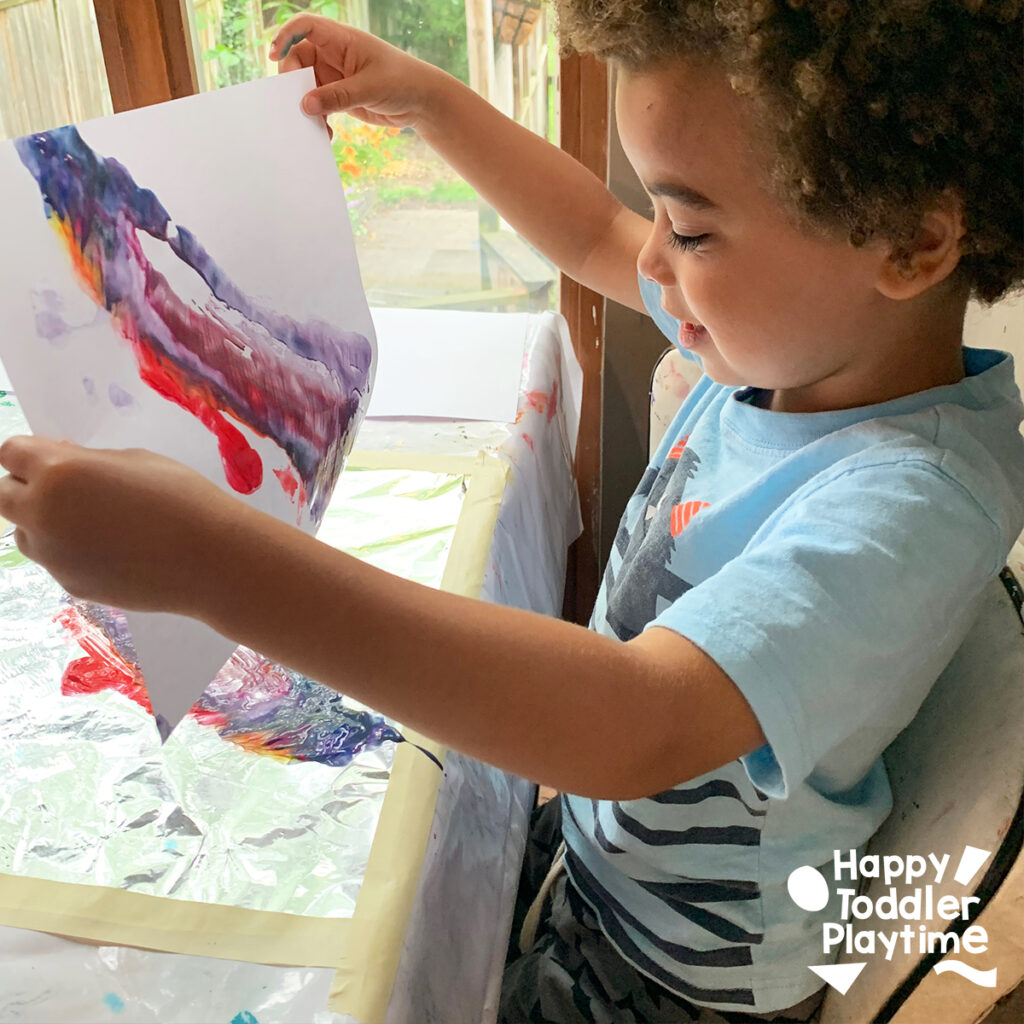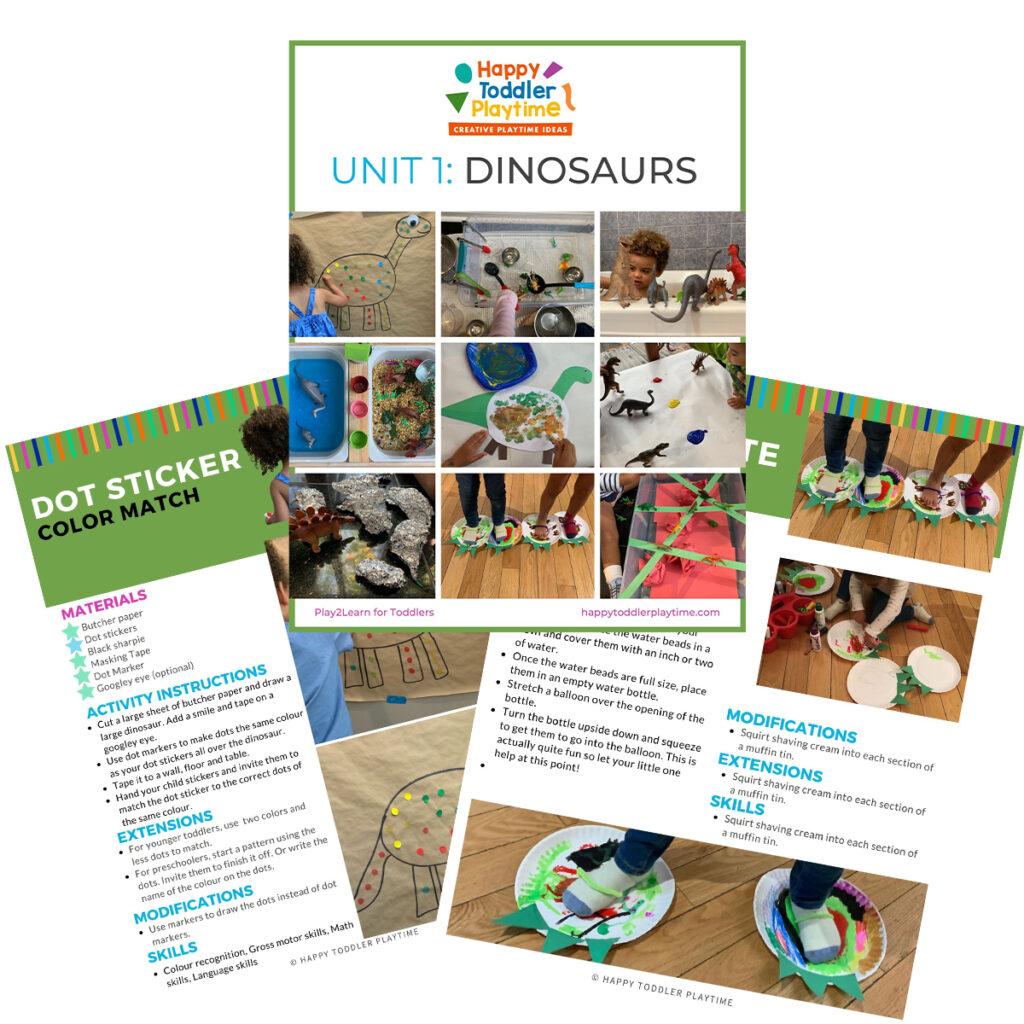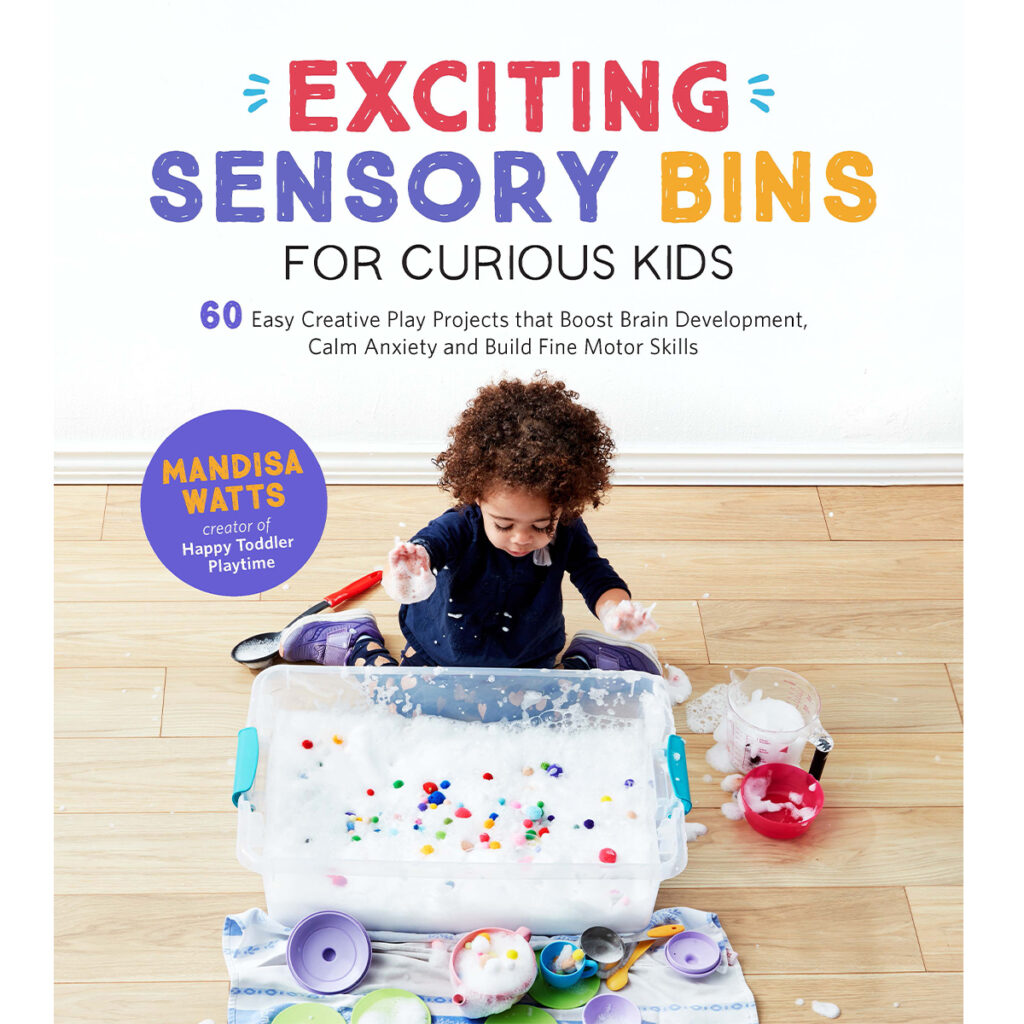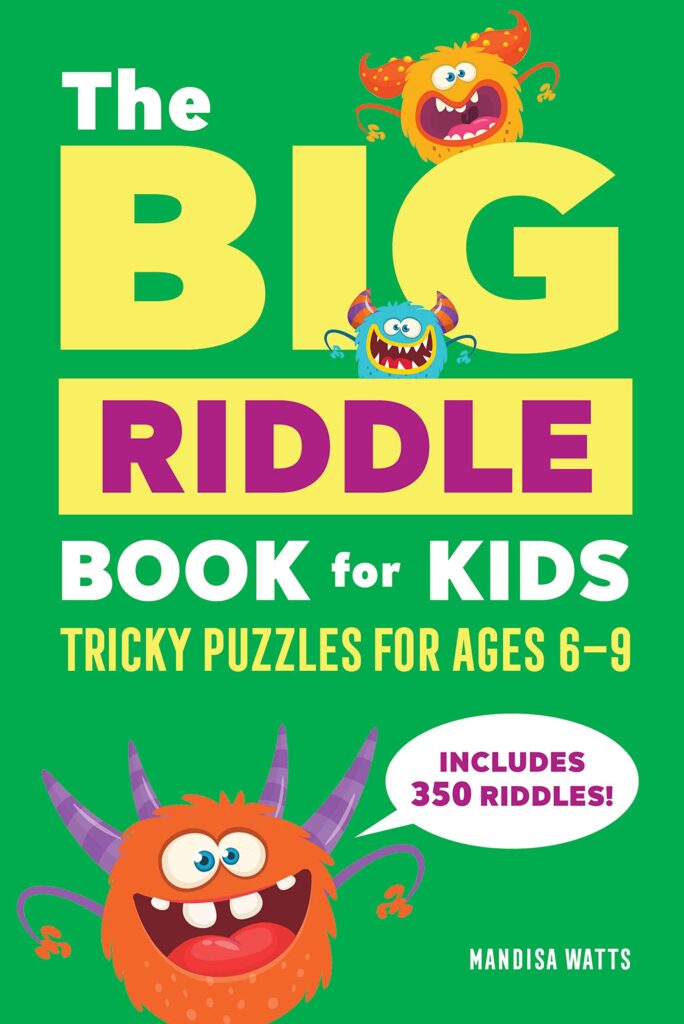Unleash your child’s creativity and embark on an artistic adventure with Aluminum Foil Painting! This process art activity is a fantastic way for kids to explore their imagination, experiment with different techniques, and embrace the joy of artistic expression. Unlike traditional structured crafts, process art focuses on the creative process itself, allowing children to explore materials and techniques freely without predetermined outcomes. In this blog post, we’ll delve into the exciting world of Foil Painting, discussing what process art entails, the benefits it offers, and guide you through this engaging and open-ended painting activity. So let’s roll out the aluminum foil and unleash the artist within!
What is process art?
Process art emphasizes the exploration of materials, techniques, and self-expression, placing value on the creative journey rather than the end result. It encourages children to experiment, make choices, and take risks, fostering a sense of confidence and creative thinking. Foil Painting is an excellent example of process art, as it allows kids to explore the unique properties of aluminum foil and experiment with various painting techniques. The reflective surface of the foil adds an element of surprise, creating interesting textures and effects when combined with paint. This activity promotes fine motor skills, hand-eye coordination, and sensory exploration, all while nurturing your child’s artistic abilities and fostering their love for creative expression.


WILL YOU TRY FOIL PAINTING WITH YOUR LITTLE ONE? Pin it for later!

Materials Needed for Foil Painting
- Aluminum foil
- Painter’s tape or masking tape
- Paint (acrylic or tempera)
- Paintbrushes, or q-tips
- Palette or small cups for paint
- Optional: other mark-making tools such as cotton swabs, sponges, or plastic forks for texture

Foil Painting
In Aluminum Foil Painting, the process takes center stage as children engage in free-flowing exploration and creative experimentation. They can tear, crinkle, or smooth out the aluminum foil, creating different textures and surfaces for their artwork. Encourage them to use a variety of painting techniques, such as blending colors, layering paint, or even dabbing the foil with different tools to create unique patterns and designs. Remember, the focus is not on creating a specific image or achieving perfection but rather on the joy of exploration and self-expression.
To start, tear off a sheet of foil and tape it to the surface of your table. You may way to protect your table first with a larger sheet of butcher paper or a plastic table clothes. Get out your paints and the items you wan to paint with.


When it comes to painting on aluminum foil, there are countless ways to explore and create with different tools. One popular method is using a paintbrush to apply paint onto the foil. The smooth surface of the foil allows the paint to glide effortlessly, enabling children to experiment with brushstrokes, patterns, and color blending. They can create bold and vibrant strokes or delicate and intricate designs, all while enjoying the unique texture and shine that the foil provides. Encourage your child to try different brush sizes and techniques, such as stippling or dragging the brush, to discover the fascinating effects they can achieve on this unconventional canvas.


Try Foil Painting with Q-tips
Another exciting way to paint on aluminum foil is by using a Q-tip. The cotton tip of the Q-tip provides a different experience compared to a brush, allowing for more precise mark-making. Children can dip the Q-tip in paint and use it to create small dots, lines, or even intricate details on the foil. This technique is particularly appealing for younger children who may find it easier to control and manipulate the smaller tool. They can experiment with different colors and patterns, exploring the fascinating contrast between the smooth foil surface and the textured dots or lines created by the Q-tip. This method encourages fine motor skills and hand-eye coordination while fostering creativity and attention to detail.
Foil Painting and Printing
After your child has completed their aluminum foil paintings, there’s a fun and engaging way to preserve their artwork and create unique prints. Simply take a sheet of white paper and gently press it onto the painted foil surface. Apply slight pressure and then carefully peel the paper away to reveal a stunning print of the painted design. This process allows children to see their artwork in a new light, with the colors and textures transferred onto the paper. They can experiment with different angles, colors, and combinations, creating multiple prints from a single painting. This printing technique adds an extra layer of creativity to the aluminum foil painting activity, transforming it into a multi-dimensional art experience.


By exploring different painting techniques with brushes, Q-tips, and even experimenting with printing, children can expand their artistic skills and develop a deeper understanding of materials and techniques. These variations provide a wide range of possibilities for creativity and self-expression, allowing children to truly make their mark on their aluminum foil masterpieces. So, let your child’s imagination soar, and watch as they bring their visions to life through the fascinating world of painting on foil!
Toddler and Preschooler Curriculums, Books & TV Show!
Play2Learn Toddler & Preschool Programs for Curious Toddlers
There is no limit to your toddler’s energy and curiosity. That energy and curiosity although a joy can be challenging at times. Their interest in just about everything around them is what makes them great learners. One and two year olds can soak up so much just from their senses!
But as a teacher or parent that thirst for learning can be exhausting. That is why I created this toddler and preschooler program. To help you get the most out of this time with your curious toddler without having to come up with creative ways to play and interact with them.
Play2Learn for Toddlers includes 20 Units for toddlers. Each 2-week toddler unit has 20 super easy to set up and engaging activities for toddlers 18 months to 3 years.
Play2Learn Preschool which includes 20 Units for preschoolers. Each 2-week preschoolers unit has 20 unique and easy to set up and engaging activities for preschoolers 3 years to 5 years. That’s over 800 learning activities for your toddler and preschooler at your fingertips! So many ideas you and your child will never be bored again!
These toddler and preschool lesson plans and activities will definitely keep you and your toddler and preschooler busy playing and learning!
Click here for more information: Play2Learn

Designed for toddlers 18 months and up.
Book: Exciting Sensory Bins for Curious Kids
Did you know I wrote a book of sensory bins? Click here for more information Exciting Sensory Bin for Curious Kids. Or grab your copy at Amazon.
Boring afternoons are made exciting with awesome animal-based bins, like Salty Shark Bay or Yarn Farm. Pretend play bins like Birthday Cake Sensory Play or Bubble Tea Party encourage creativity and imagination. And your kids will have so much fun they won’t even know they’re getting smarter with STEAM (science, technology, engineering, art and math) activities like Sink or Float Soup, Magnetic Letter Hunt or Ice Cream Scoop and Count.
Designed for toddlers 18 months and up.

Book: Super STEAM Activity Book for Kids
Learning all about science, technology, engineering, art, and math sets kids up for scholastic success―and it can be so much fun! Watch kids enjoy building STEAM skills as they color friendly fish, help water find its way to tree roots, solve math problems with mazes, and more.
Find out more and grab your copy here.
Designed for preschoolers 3 years old and up.

Book: Big Book of Riddles for Kids
Riddle me this: What’s an exciting way to practice critical thinking while having a blast? The Big Riddle Book for Kids, of course! From hilarious puns to tough brain teasers, kids can build problem-solving skills with hundreds of riddles that show them how to think outside the box.
- 350 riddles for kids—Have hours of fun with riddles, puns and jokes, and math and logic puzzles that’ll get their wheels turning!
- Level up their skills—Riddles get trickier as kids progress through the book, challenging them as they get better at solving puzzles!
- Double-check their work—Kids can check their answers in the back of the book with a handy answer key.
Help children expand their minds while having fun with this puzzle book for kids!
Designed for kids ages 6 years old and up.

TV Show: Curious Crafting
I’m so excited to share my crafting TV show Curious Crafting which launched in July 2022 on TVOkids and TVOkids YouTube! Season 2 airs in the summer of 2023! We were also nominated in 2023 for Best Live Action Preschool Series by the Youth Media Alliance Awards of Excellence.
Set in the ultimate crafting space, Curious Crafting is a short form pre-school age series about the joy of making crafts. I lead a rotating cast of adorable little preschoolers (including my own) making magic out of common household objects.
In each episode we transform recycled items into magical crafts like a milk carton school bus, paper bag puppet or cotton pad turtle. The crafters learn and laugh their way through each activity while demonstrating what their young imaginations can create.
Curious Crafting shares the adventure and joy of making art with takeaway lessons for creating crafts at home.
This show designed for toddlers and preschoolers 2.5 years old and up.
WILL YOU TRY FOIL PAINTING WITH YOUR LITTLE ONE? Pin it for later!





